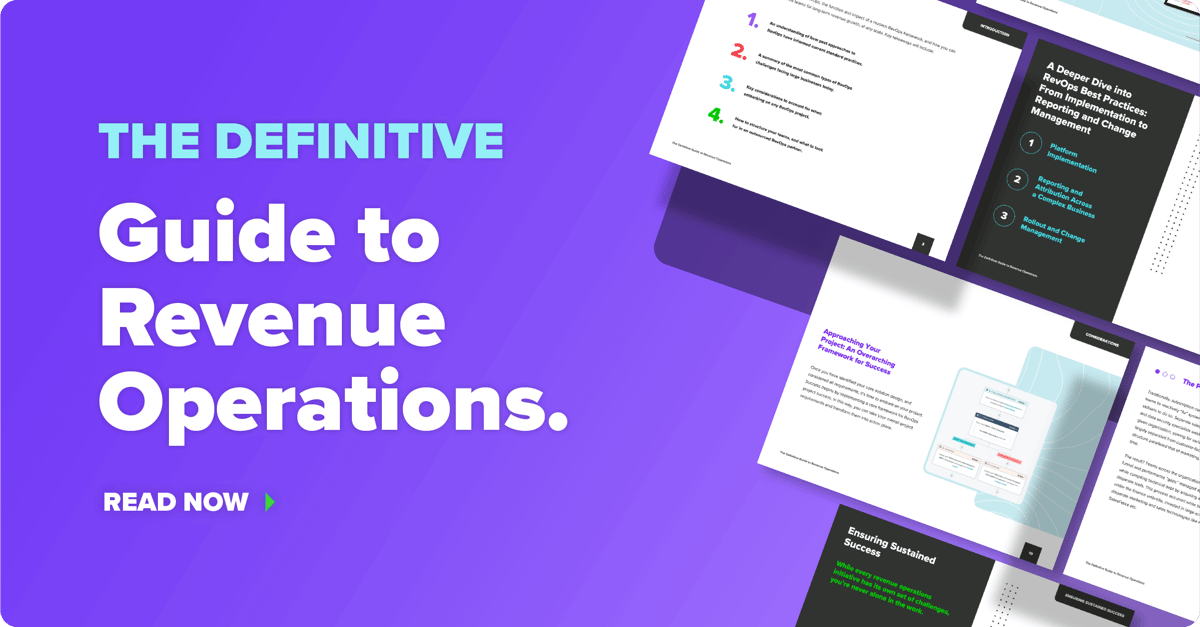13 SaaS Marketing Pros Reveal Their Lead Generation Strategies
It’s no secret that lead generation is a critical component of any successful marketing strategy. Identifying and attracting the right customers for the right product at the right time can often feel like an uphill battle, but many businesses have already provided blueprints for how to generate leads effectively.
For SaaS companies in particular, effective lead generation strategies are critical drivers of both growth and revenue. Since SaaS products are typically subscription-based and often require a longer sales cycle, companies need a steady stream of high-quality leads to deliver year-over-year growth.
That being said, lead generation strategies come in all shapes and sizes, so how are you supposed to determine which ones are best for your business? Between content marketing, social media marketing, SEO, PPC advertising, and email marketing, deciding which basket to put your eggs in isn’t always easy.
If building trust and credibility with your audience is a top priority for your business, content creation might be a key focus. Looking to increase your reach and engage with potential customers on a personal level? Building your presence on social media might be a worthwhile endeavor. Or perhaps you want to get as many people as possible to check out your new and improved website. In that case, PPC advertising is likely your best bet to accomplish this goal.
Suffice it to say, you have no shortage of options when it comes to executing lead generation strategies. To know which ones are best for your business, it can be helpful to hear from some proven professionals in the marketing space.
That’s why we asked 13 seasoned SaaS marketing professionals about their favorite lead generation strategies or tactics in today’s world. By understanding what marketing gurus are prioritizing when it comes to their lead generation strategies, you’ll have a better sense of how you can attract, engage, and convert your own customers.
Meet our panel of SaaS marketing experts:

Sujan Patel, Co-Founder
My favorite SaaS lead generation strategy for businesses is actually a few different elements combined.
Build network effect into the product
It’s always a good idea to build a network effect on the product. E-commerce sites ask you to share after you make a purchase. Think of this as the same thing — just for B2B SaaS lead generation. Use this tactic specifically during the signup or purchase process right after the "aha" moment. It's always best to use this tactic when the user is at an emotional high.
Utilizing email campaigns effectively
Onboarding is key to most SaaS companies, yet users usually fall off throughout this process. I recommend setting up an email marketing drip campaign to resell the value proposition, re-educate and offer incentives for users to come back. For my personal campaigns, I go as far as creating a 12-month drip campaign. Frequency depends on the trial length, but it typically goes 1, 4, 7, 14, 21, 30 and 45 days. Then every two weeks after that.

Sujan Patel has twelve years of experience in digital marketing and is the former vice president of marketing at When I Work. He recently co-founded Mailshake, a fast-growing startup that provides sales engagement software. He is an avid blogger and writes for Forbes Inc., The Wall Street Journal, and Entrepreneur. You can find him on Twitter @sujanpatel
Dave Rigotti, VP of Marketing
Do pipeline marketing to optimize the entire marketing funnel, especially revenue.
Balancing funnel growth and revenue
As the head of marketing for a fast-growing enterprise-SaaS startup, I spend a lot of energy managing funnel growth. However, I balance that volume with quality to maximize the most important marketing metric: revenue. This is what pipeline marketing is all about and why we abandoned lead generation... this decision has been the key factor in our growth.
Using chatbots
Once we started doing pipeline marketing, we found live chat to be an incredibly effective channel. Since site visitors are actively engaging with us, they tend to be highly qualified leads.
If you were to rank all lead generation activities we do every month, live chat would be at the bottom in terms of quantity of leads generated and for the significant amount of energy to operate. However, it’s near the top in terms of revenue.
We found live chats contribute upwards of 25 percent of our new monthly revenue each month, which makes it the third most effective sales channel in terms of revenue. A big factor is the 50 percent higher lead-to-opportunity conversion compared to other leads.

Sujan Patel has twelve years of experience in digital marketing and is the former vice president of marketing at When I Work. He recently co-founded Mailshake, a fast-growing startup that provides simple email outreach and sales engagement software. He is also an avid blogger and writes for Forbes Inc., The Wall Street Journal, and Entrepreneur. You can find him on Twitter @sujanpatel
Sam Aparicio, CEO
As someone who is always looking to deliver the best customer experience possible, I believe lead generation strategies are made much more effective with the implementation of proven products and technologies.
Using product integrations
Work with complimentary SaaS products and build a relationship with partner companies to help both of you grow. Generate high-affinity qualified web traffic referred from the marketing programs and web assets of your company's partner. Pick an integration with an organization that would be most willing to promote the integration and would be most incentivized to open up their ecosystem to you.
Optimizing your lead nurture strategies
Most people nurture through marketing automation, curated content sharing, and phone calls. You have to think more about creating opportunities for touchpoints and discovering more about your leads. Look at implementing workflows for whitepaper downloads, expired trials, and CTAs for "stay in touch" and for "are you happy/would you refer?" for customers.

Sam Aparicio is the co-founder and CEO of Ring.io, a CRM-integrated telephony platform. Sam is particularly interested in Cloud Communications, the SMB market, self-service models, and SaaS/on-demand business delivery. You can find him on Twitter @samaparicio
4. Adam Kearney, CEO
Lead generation strategies don’t always go as planned, which is why he believes diversifying your lead generation efforts is an effective way to minimize the negative repercussions of a subpar lead generation effort and expand your potential target audience base.
Embracing lead diversification
When it comes to online lead generation, the key is diversification. There’s no magic bullet that meets all needs. SEO, SEM, content marketing, social media, advertising, sales development, and more–these are all parts of a healthy marketing ecosystem.
Lessening the harm of poor lead generation efforts
By diversifying your efforts and ensuring you have a broad approach to lead generation, you don’t become too reliant on any one tactic. That’s especially important when things change as quickly as they do in today’s world. What’s more, by diversifying you free up the necessary space to try out wild and novel ideas and, more importantly, to fail at them without hurting your overall goals.

Adam Kearney is the former VP of marketing at MemberClicks and current Co-Founder and CEO of Modern University, a coding school where students learn from professional engineers in classes smaller than 10 students. You can find him on Twitter @AdamKearney.
Cara Tarbaj, Production Coordinator
Content is key to any lead generation strategy. With the right combination of e-books, ads, landing pages, and personalized support, you can take your lead generation strategies to the next level.
Creating e-books
This is the most cost-effective strategy I've included, yet also the most valuable to your clients. e-books are a great way to get a niche market educated on something that is relevant to your product or business. Brainstorm and figure out what your buyer personas or existing customers would like to learn about. Ask your social media fans and followers what they'd like to learn about or even ask your email list!
Developing ads and landing pages
Ads and landing pages are an effective combination for lead generation. Google AdWords can get a little costly for SaaS companies, but it depends on the keywords you use. It’s definitely a strategy that’s worth looking into. A well-executed Google AdWords campaign targeted to the correct audience with an optimized landing page can be a winning combination to score qualified leads for your SaaS company. I feel so strongly about utilizing this combination that I’ve written a couple of e-books on how beneficial they can be for certain industries.
Hosting meetups
This is my favorite tactic of the three. I work for an online marketing startup, and we recently started hosting meetups at our office on the first Friday of every month. There are really no prerequisites, other than having an interest in tech. We've been able to meet a lot of cool people in the tech industry this way and have even found some developers to work for us! All you have to do is provide some activities, food, and beverages. Make your meetup official by posting it on meetup.com.

Cara Tarbaj is a former digital marketing specialist at Wishpond. She currently works as the Production Coordinator at Jarmain Productions. As a former member of a growth team at a SaaS startup, she’s well-versed in determining how to leverage content marketing to generate leads for their business. You can find her on Twitter @caratarbaj
Jonathan Bentz, Marketing Manager
When I first started at Netrepid, our website had failed to generate a lead as far back as anyone could remember. After two years and over $2 million in new business opportunities generated by our website, I've found the following three methods to be most effective for us at generating leads online.
Leaning on Search Engine Optimization (SEO)
We've tested many different methods for generating leads, but search engines are still the biggest driver of leads for our business. Keeping an eye on our rankings for the long tail and high volume keywords, but primarily focusing on creating good content to acquire the right traffic will turn into qualified leads that are in the purchasing stage of their buyer's journey.
Generating direct traffic
In our scenario, a large volume of direct traffic has been generated by merging the websites of businesses we have acquired over the past couple of years into our site. In those cases, the redirection has been key to introducing customers and former clients of the old companies to our name and our brand. The trust they had in those older brands has led to new business opportunities for us. Additionally, we have generated several opportunities and multiple thousands of dollars in recurring monthly revenue through the redirection of those sites and the leads generated by direct traffic from those sources.
Benefitting from industry-relevant referring sites
In our niche of the tech sector, there are a lot of web portals with service provider directories. We have found our listings in these service provider directories to be effective at lead generation for businesses of all sizes, but especially for generating revenue from small business clients. In theory, small businesses likely trust the industry-relevant portal because of its high-quality editorial. If they trust the editorial, then they can also trust the companies listed in the service directory as qualified.
 Jonathan Bentz formerly served as Netrepid's marketing manager, and now serves as the marketing manager at Direct Online Marketing, a top 200 Premier Google Partner helping midmarket and B2B companies grow confidently online using digital ads and SEO. His online marketing expertise has been featured in BtoB Magazine, CIO, E-Commerce Times and SEO Chat. You can find him on Twitter @jonathanbentz
Jonathan Bentz formerly served as Netrepid's marketing manager, and now serves as the marketing manager at Direct Online Marketing, a top 200 Premier Google Partner helping midmarket and B2B companies grow confidently online using digital ads and SEO. His online marketing expertise has been featured in BtoB Magazine, CIO, E-Commerce Times and SEO Chat. You can find him on Twitter @jonathanbentz
Jacob Baldwin, Director of Corporate Marketing
I believe the consumer's benefit of the B2B SaaS lead generation model lies in the fact that the user of the product/service never has to download or install any programs to use the service since it's on the web (mobile app counterparts are a different story). They simply pay the fee, and they have instant access.
I look to four primary vehicles for lead generation within the SaaS model.
Offering free trials
A free trial is an amazing tool. It should accomplish the goal of getting users to try your product/service because they can do it for free. Most free trials are bound by some time dimension: "Gain instant access to the Enterprise-level product for 30 days, no credit card information required." The idea is once they use the tool, they will realize the benefit, become a PQL, and (if your price point is in line with expectation), congratulations, you've just scored yourself a customer.
Implementing a freemium model
The freemium model is a twist on the free trial. While the free trial allows unbridled access to the system, the freemium model offers limited access to the entire suite of tools. This iteration of lead generation assumes that for the general population, upgrading to a paid subscription is necessary to maximize the business value that the tool brings to the table. Generally, some core piece of functionality that really delivers massive benefits is not included in the free plan. Instead, it acts as an incentive to upgrade to a paid subscription.
Empowering your customers
Some people have done their research and know that you're a potential vendor, but are just putting something out to bid, so they're simply requesting a price quote from you. Give them what they want, but in a way that maximizes the value your particular solution brings to the table (such as a side-by-side comparison of key performance metrics for your solution vs. your closest competitors). We're in a very consumer-driven world. If you don't give them what they want, someone else will be happy to fill the void.
Enhancing content marketing efforts
This has been a hot topic for some time now and yet many companies still haven't executed successful content marketing strategies. Ideally, you'll have your audience segmented into the different markets you serve and mapped along their buyer's journey (or your marketing funnel). You should know the pain points at the top of the funnel:
- What pieces of information are customers looking for when they first start the "problem discovery" phase of their journey?
- What information are they looking for when they're demoing products? You should be there at every step of the way.
Write blog posts that talk about some of their most prominent pain points and reference a whitepaper you've written if they want to dive deep. But, remember, there has to be some exchange to get the "best" pieces. Perhaps it's just an email or maybe it's the company name, email, and first name. This depends on what you need to properly build out your marketing contact database, but choose wisely—you'll use these fields to segment your database down the road for niche marketing efforts.

Jacob Baldwin is the former global manager of Digital Marketing at Emerson Climate Technologies. He currently acts as the Director of Corporate Marketing for UNITED GRINDING North America. Over the past several years, he has been recognized as an emerging expert in the field of digital marketing, speaking at multiple national industry conferences. You can find him on Twitter @jacobaldwin
Jeff Foster, CEO
Utilizing influencer marketing
Influencer marketing is currently providing huge returns for businesses. The latest survey shows that marketers are making $6.50 for every dollar they spend. Given the large margins of most SaaS businesses, there's an opportunity to see very impressive returns.
Many SaaS entrepreneurs make the mistake of targeting influencers that speak about purely about software. This is rarely the right approach. If you're selling a CRM, engage with influencers that write about sales. If you're selling an HR product, find the one hundred people that are most important in that area.
Influencers can drive engagement and generate leads, but they can also help to increase conversion rates. Include quotes from influencers in your sales copy and ask them to participate in webinars and other marketing activities.
 Jeff Foster is co-founder and CEO at Tomoson, the influencer marketplace. The platform allows bloggers and social media influencers to get paid for posting sponsored content, and lets businesses connect with targeted, niche audiences. You can find him on Twitter @webbizjeff.
Jeff Foster is co-founder and CEO at Tomoson, the influencer marketplace. The platform allows bloggers and social media influencers to get paid for posting sponsored content, and lets businesses connect with targeted, niche audiences. You can find him on Twitter @webbizjeff.
Patrick Merfert, VP of Product Marketing
One of the most effective and efficient ways at generating leads for a SaaS startup is by focusing on content development and inbound marketing. Blogging regularly on topics that are relevant to your audience should be a high priority to gain organic traffic and, ultimately, leads over time.
You should seek to share each piece of content multiple times on the social channels that are most applicable to your audience. Additionally, it's important to have lead capture technology and a marketing automation platform in place, to this end I'm a big fan of HubSpot. Patrick is passionate about disruptive technology and was formerly the director of marketing at 9Lenses. He now acts as the VP of Product Marketing at Prove, a SaaS business that offers phone-centric solutions that enable its customers to acquire new consumers and engage with their existing consumers. You can find him on Twitter @patmerf
Patrick is passionate about disruptive technology and was formerly the director of marketing at 9Lenses. He now acts as the VP of Product Marketing at Prove, a SaaS business that offers phone-centric solutions that enable its customers to acquire new consumers and engage with their existing consumers. You can find him on Twitter @patmerf
Jim Belosic, CEO
Data can make all the difference when it comes to effective lead generation. In addition to collecting email addresses, I also believe it’s better to have a smaller group of customers that is loyal to your brand versus casting a wide net and engaging with customers that simply aren’t the right fit.
Giving invite-only access
I recommend starting with a beta period that's invite-only access, so you build a loyal core group of customers. You can then take those people and ask them to recommend your product to their friends and ideally they'd recommend good potential users.
Collecting email addresses
From day one, you should be collecting email addresses everywhere you can—your site, your blog, your content. Every person that tries your product is a lead, even if they don't become a user right away. You may still offer a feature in the future that is of value to them. In this instance, an email can make them active again.
Optimizing your content marketing strategy
The last thing I'd recommend is having a strong content marketing strategy. If you're able to position yourself as an expert in that industry, when people need your product they'll think of you first because you've positioned yourself and your company as someone who knows what they're doing.

Jim Belosic is the CEO of ShortStack.com a software that businesses use to build social media marketing campaigns. He’s now the Founder and CEO of SendCutSend.com, an online CNC and laser-cutting solutions provider. You can find him on Twitter @shortstackjim
Aria Solar, Sr. Biz Ops Manager
The main way I use social media to increase brand loyalty is by using it as a valuable source of information for our followers. Content on social media needs to have educational value to readers and it needs to be information they can use in growing and improving their company. It should spark ideas, conversation, and even arguments. In doing this, your audience will not only trust you more, but they will have a reason to keep coming back.
Targeting the right platforms
For B2B marketers, LinkedIn and Twitter have the highest traction in terms of customer engagement—it's where your audience lives during the workday. Posting content here, as well as commenting, sharing, and starting conversations with other people is a great way to get your content read and shared. Social media has helped us retain customers over other channels because it allows your customer base to interact with you on their own terms.
Resonating with your audience
When using the phone, you may not be catching them at opportune times. However, you can guarantee that on social media, your reader is reading what they want to read when they want to read it—meaning that your content has a much higher likelihood to resonate with them and you'll actually be heard.
Aria is the inbound marketing coordinator for UrbanBound. She’s now the Senior Business Operations Manager at Sprout Social, Inc., a global leader in social media management and analytics software. You can find her on Twitter @ariasolar
Leeyen Rogers, Sr. Product Manager
Even if you’ve just created a killer guide that is written beautifully, it will ultimately fall flat if it’s not effectively optimized for search engines. That’s why I believe SEO is such an important factor when it comes to solid lead generation strategies.
Strengthening your SEO efforts
Startups should approach online lead generation with a multi-faceting mindset, focusing on SEO. You must expect that your users will be doing their research before committing to your product, so you need to make information accessible, clear, and concise. Potential users should be able to quickly skim over materials about your product, gather your selling points and see how you compare to your competitors.

Leeyen Rogers is the VP of marketing at Jotform. She’s currently a Senior Product Manager at Rivian, an American electric vehicle manufacturer and automotive technology company. You can find her on Twitter @leeyenrogers
Matt DeCoursey, CEO
Using the right tools
As the owner of a SaaS startup, I've tried quite a few different approaches to lead generation. Adwords provided a feel of immediate results, however, it came with a somewhat unaffordable invoice. For local marketing and more outbound approaches, we used easily accessible tools like Google Maps, Angie's List and other directory products in order to try and gain direct contact with businesses.
Publishing blog content
This approach didn’t yield the best overall results, but it did yield some results. The best form of marketing that we have found is publishing blog content on our website. This has allowed us to reach a “long-tail” segment of customers who search for solutions that aren’t commonly sought.
 Matt DeCoursey is the former president and founder of GigaBook, located in Overland Park, Kansas. He is currently the CEO and Co-Founder of Full Scale, a tech services company that helps businesses build teams of software engineers. The company provides cloud-based appointment software to small and medium-sized businesses.
Matt DeCoursey is the former president and founder of GigaBook, located in Overland Park, Kansas. He is currently the CEO and Co-Founder of Full Scale, a tech services company that helps businesses build teams of software engineers. The company provides cloud-based appointment software to small and medium-sized businesses.
Wrap-Up: 5 B2B SaaS Lead Generation Strategies to Implement Now
Analyze your customer acquisition channels
To ensure success in B2B SaaS lead generation, it is important to identify your customer acquisition channels and analyze the effectiveness of each. Evaluate different approaches like email campaigns, content marketing, engaging webinars, social media marketing, etc., to test and choose which one performs best. Then optimize and focus on that channel to generate quality leads and drive sales.
Develop targeted content for prospects
Content marketing is a key part of your B2B lead generation strategy. Create content that educates, informs, and engages your audiences by addressing their needs and interests. Research the topics that current or potential customers find valuable, design effective content pieces such as blog posts, white papers, case studies, etc., for them, and share them on various online platforms to maximize reach.
Utilize email automation and triggered messages
Email automation and triggered messages allow businesses to target the right customers at the right time with the right message. It enables companies to set up automated emails that are sent out at predetermined intervals or when certain actions are taken by users. For example, you can send automated welcome emails when new subscribers sign up, notify leads of upcoming webinars, or send coupon codes when they abandon their shopping carts on your site. By engaging and sending relevant content to leads based on their behavior, you can help guide them down the sales funnel more effectively.
Optimize your website experience point-by-point
Having an optimized website and user experience is essential to ensure customers can quickly navigate to the information they need and have a positive experience. Invest in A/B testing tools like Unbounce to identify areas of improvement, optimize your website for mobile devices, and minimize load times so customers can find what they need as quickly and easily as possible. Additionally, adding exit-intent popups to capture lead magnets will give you yet another chance to collect more email addresses.
Test social media ads and monitor engagement metrics
Social media ads are an excellent way to reach new customers and increase brand awareness. Take advantage of platforms like Facebook Ads Manager and Google Ads to create targeted campaigns based on customer demographics, interests, location, and more. Monitor their performance with analytics tools to identify areas of improvement or possibly redesign weak-performing ads. Also track engagement metrics such as likes, shares, comments, views, time watched, etc., that indicate the quality of content being shared and the overall effectiveness of campaigns.
Enhance Your Demand Generation Efforts
Our 13 SaaS marketing experts provided essential tips to building your own lead generation strategy. Your lead generation efforts can also be supplemented by a powerful demand geneartion program. Download our Essential Guide to Demand Generation to start incorporating a well-rounded approach to your SaaS growth.







